Correlating neural signaling with behavior
Combining mouse locomotion tracking with imaging or electrophysiological recordings opens doors to understanding the neural and physiological underpinnings of behavior. This integrative approach offers insights that extend beyond mere movement patterns and delves into the intricate mechanisms that govern locomotion.
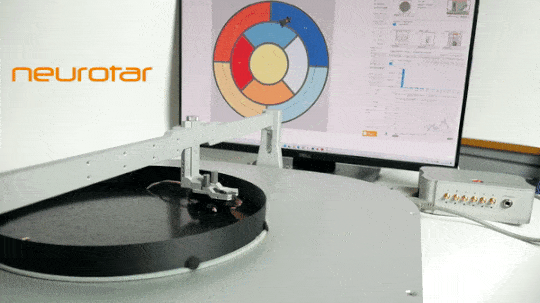
Tracking systems
Locomotion tracking involves the precise measurement of parameters such as speed, velocity, distance traveled, and changes in direction. Unfortunately, traditional observational methods are imprecise and prone to human error. The value of tracking systems lies in their ability to provide objective and quantitative data about mouse movement as well as detailed analysis.
Neuroscience labs that use high-precision techniques such as two-photon imaging or electrophysiology typically use video cameras to record the movement of the animal in space and detect fine movements such as grooming or rearing. Commercial and DIY video tracking systems can also provide detailed information about the animal’s behavior, such as the time spent in different areas of the cage.
Limitations of the video tracking systems
Unfortunately, video tracking systems require a relatively large amount of storage space for the video data and they can be affected by changes in lighting conditions, which can affect the accuracy of the tracking. Additionally, video tracking may be obstructed by the objects in the imaging or electrophysiological setups. Finally, cameras require additional space in the already space-constrained settings.
At Neurotar, we have created a solution that overcomes these limitations.
Neurotar’s mouse locomotion tracking solution
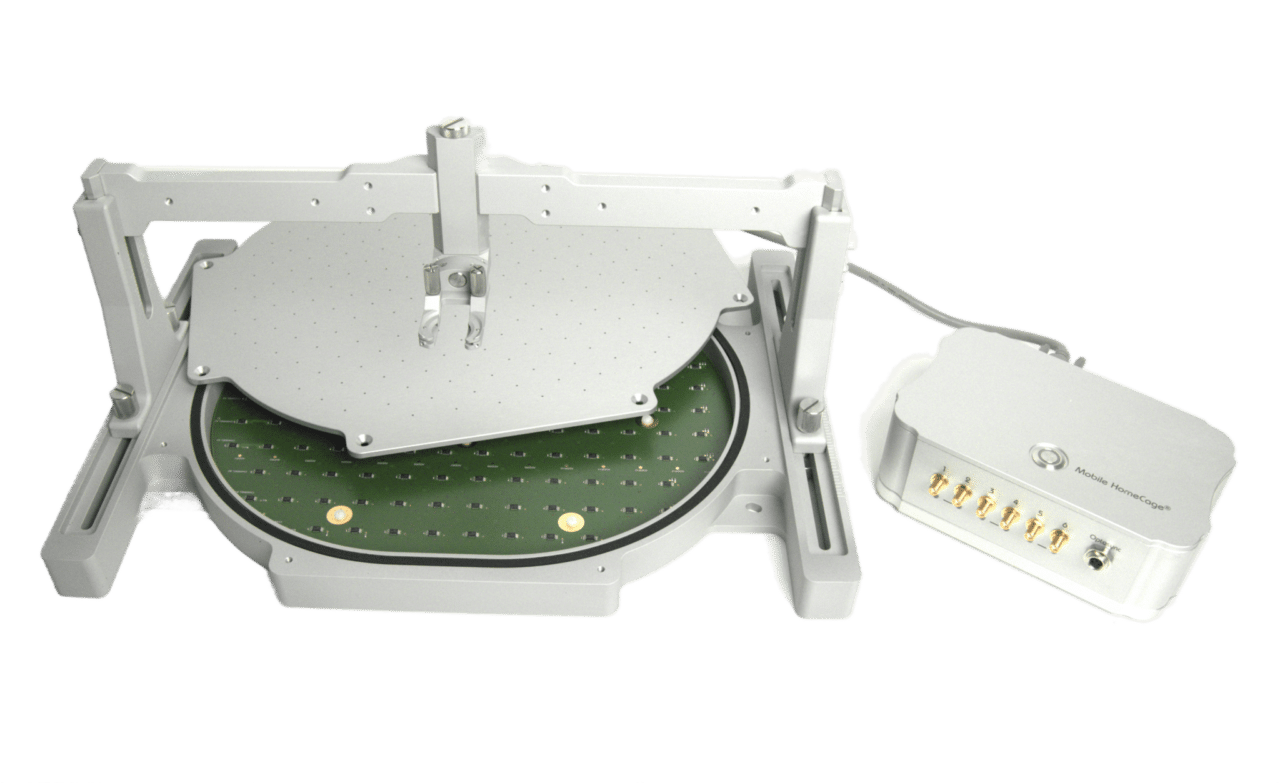
We have built our tracking devices into the Mobile HomeCage air dispenser so that they don’t take up extra space in the experimental setup. Instead of video recording, our solution utilizes magnetic tracking. Magnetic tracking is unaffected by environmental factors such as lighting conditions, shadows, reflections, and external objects, which can affect the accuracy of video-based tracking. Beyond this, our magnetic tracking is fast and precise.
The locomotion tracking electronics consist of an electronic control unit (ECU) electrically connected with a sensor board mounted in the air dispenser. The sensors measure the magnetic fields of two magnets built into a mat placed inside the cage (standard-size Mobile HomeCage) or the cage floor (Mobile HomeCage Large). The sensors extrapolate the changes in the magnets’ position into the mouse’s position, speed, and velocity.
Benefits of Neurotar’s locomotion tracking
Core benefits of Neurotar’s mouse locomotion-tracking solution include:
- High acquisition rate (200 fps)
- High spatial resolution (0,5 mm)
- Compactness (the sensor board is mounted inside the air dispenser: no extra space is required)
- Imperviousness to lighting conditions and objects in the setup (magnets are unaffected by light and they “see through” objects)
- Comprehensive software (data on the speed & velocity; heat-maps; integration with operant conditioning).
The second generation of Neurotar’s mouse locomotion-tracking solution
In 2023, we have updated locomotion tracking hardware and software to further improve the precision & speed of acquiring the locomotion data and enhance connectivity with external equipment. The second generation of locomotion tracking offers these additional benefits:
- Increased accuracy of position readings, and ability to detect lower amplitude movements;
- Improved synchronization between locomotion and neuronal activity;
- The ability to synchronize with up to six external devices with different voltage specifications;
- Synchronization with imaging hardware without an electrical connection (Optosync, see below);
- Greatly improved synchronization accuracy with external hardware and software;
- Multiple functional and user interface improvements in the software;
- ECU’s improved look, feel, and functionality: Increased number of I/O ports (6 ports that support four voltage specifications 1.8 V, 2.5 V, 3.3 V, 5.0 V), I/O ports’ status indicators and more user-friendly I/O port’s connectors (SMA);
- Improved electrical shielding (ECU).
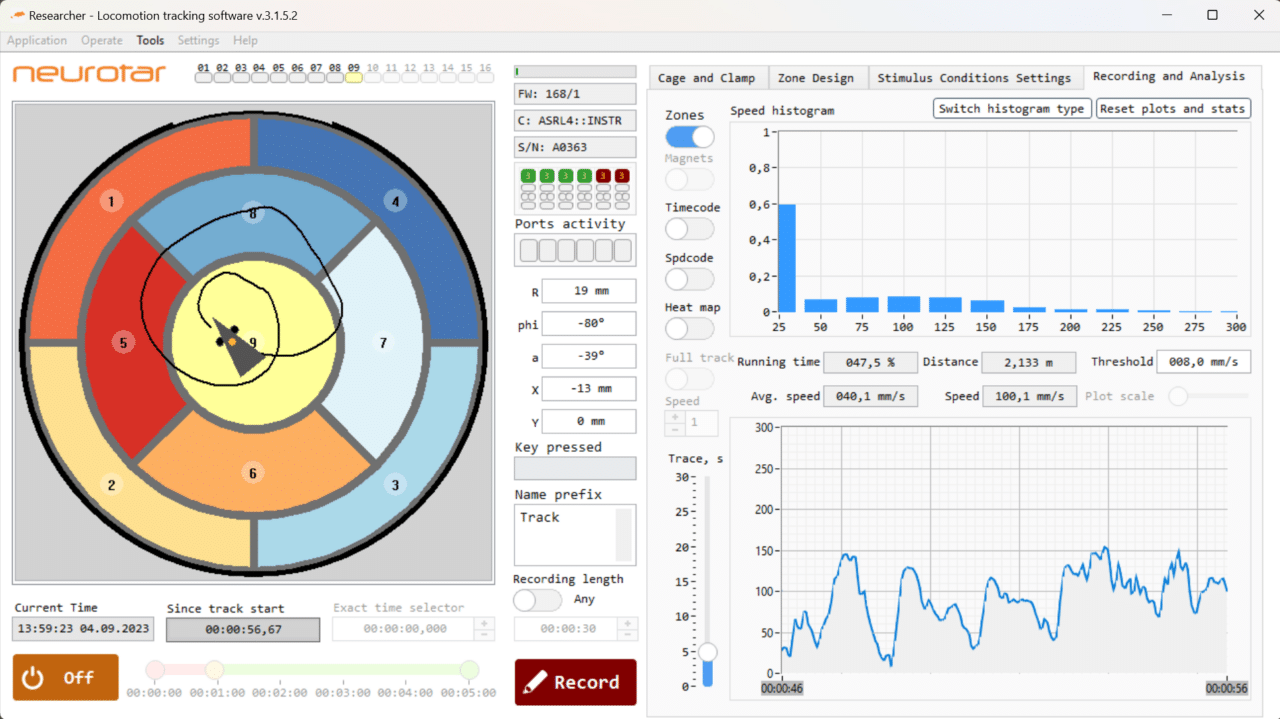
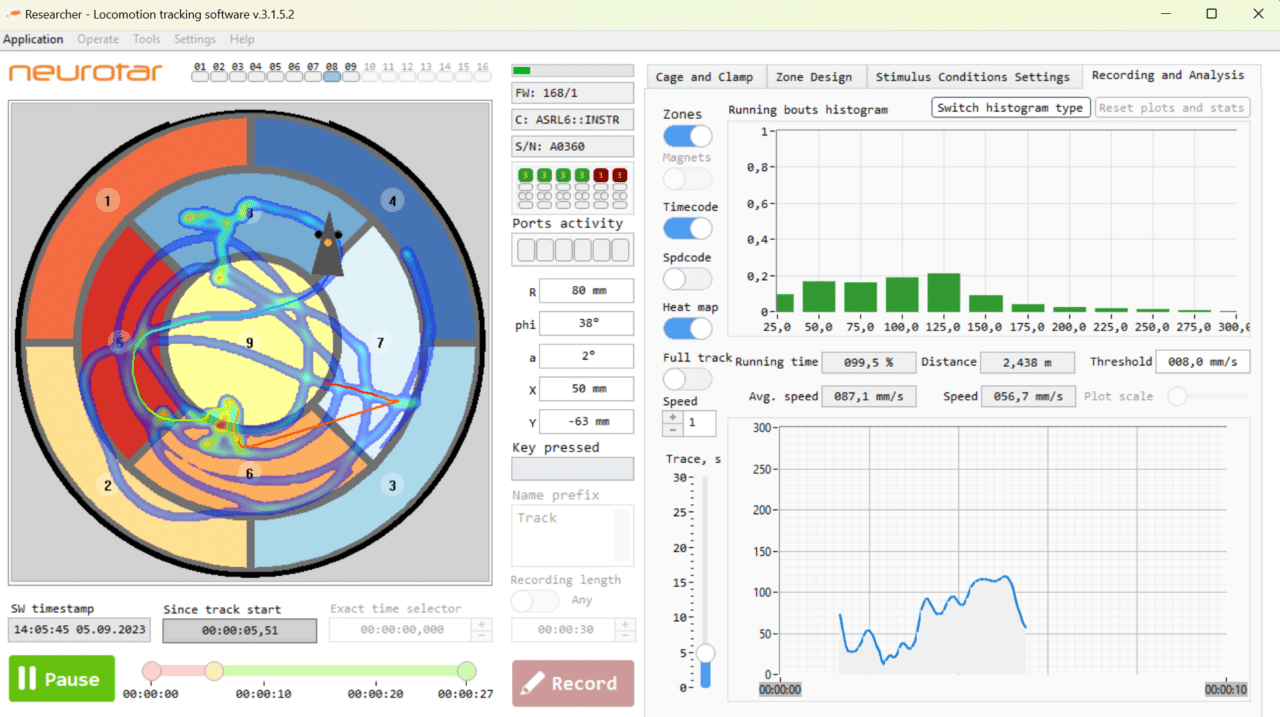
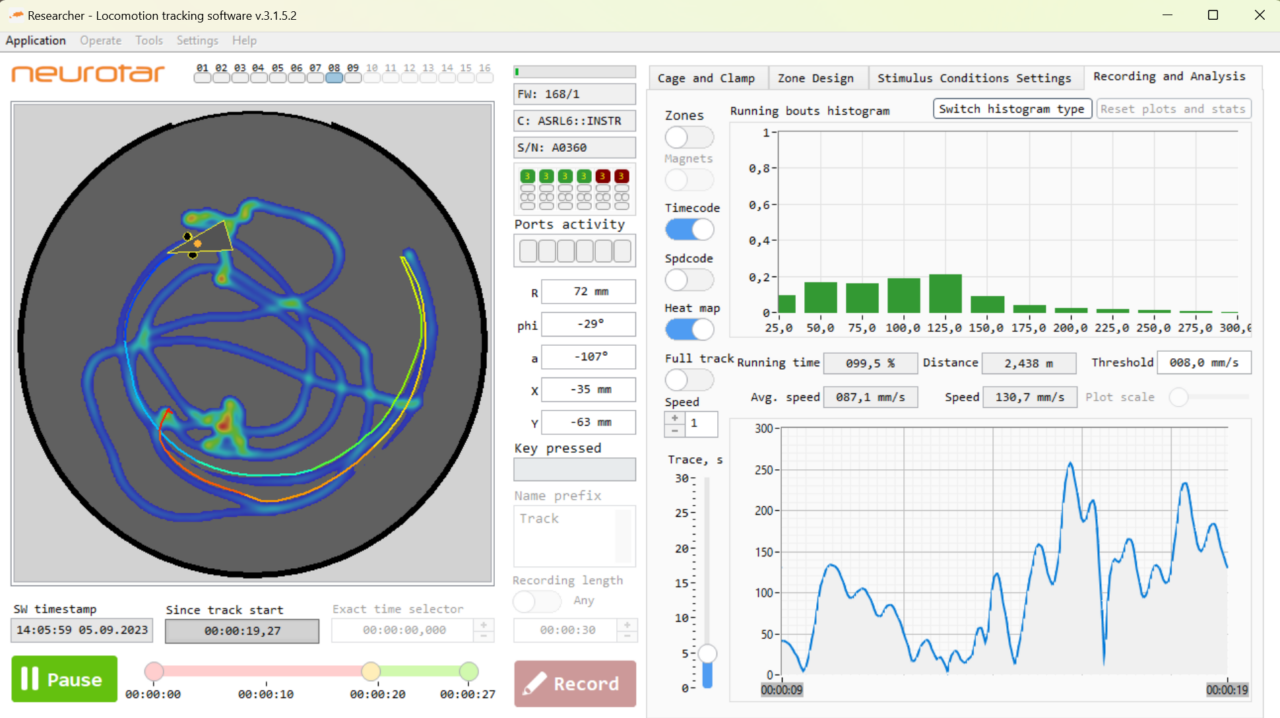
Optosync
We have added the Optosync function to enable the highly accurate synchronization of the locomotion and the imaging data without an electrical connection. This feature is indispensable for optical microscopes that do not have a TTL output.
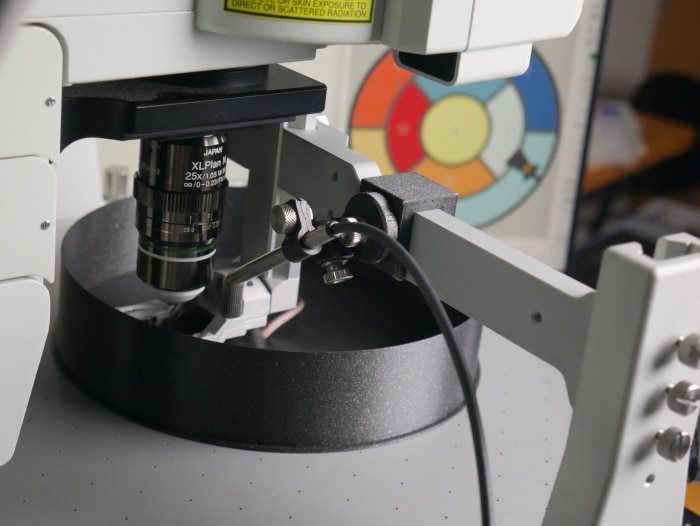
The Optosync probe, included with the Mobile HomeCage (standard or large) or as part of a locomotion tracking upgrade, is positioned close to the light source. It records changes in light intensity and generates a virtual TTL signal when a defined threshold is crossed.
Optosync makes our locomotion tracking solution easily compatible with any optical microscope that produces pulsed light, eliminating the need for intermediary solutions, such as dedicated synchronization hardware (e.g., a NI board) or DIY solutions. The imaging and locomotion data are recorded simultaneously and paired via timestamp, enhancing the efficiency and accuracy of research.
Applications
Mouse locomotion tracking is an invaluable tool for researchers seeking to combine high-precision imaging or recording with behavioral experiments. It opens up multiple possibilities for research:
Behavior-neural correlations
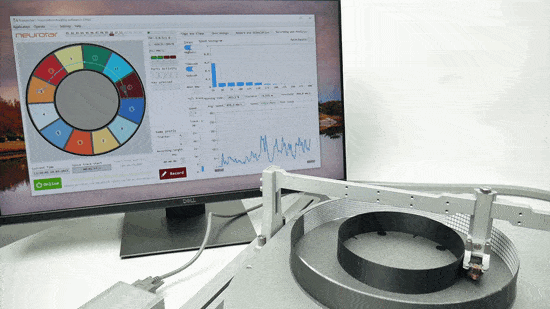
Behavior-neural correlations: By analyzing neural activity in conjunction with locomotion patterns, researchers can uncover how different neural circuits are involved in specific locomotion behaviors, such as walking, running, or exploratory movement. The data can serve as an Independent behavioral readout as well as an integral part of other behavioral paradigms, such as maze navigation, open-field tests, or sociability tests, all of which can be implemented in the Mobile HomeCage Large.
Motol control mechanisms
This integration can reveal the neural pathways responsible for motor control and coordination, shedding light on how the brain translates intentions into precise movements.
Neurological disorders
Researchers can use locomotion tracking to study how neurological disorders affect both movement and neural activity. This approach could lead to better understanding, early detection, and potential therapies. Neurotar’s Mobile HomeCage systems have been successfully employed in research on neurodegeneration and mood disorders. Most recently, they have been utilized in the development of new psychedelic-based therapies.
Close-loop experiments
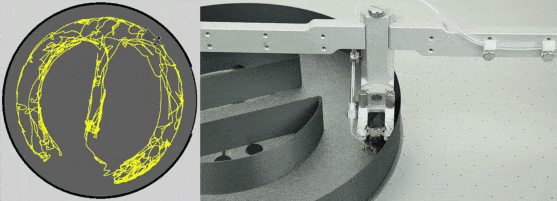
Combining tracking and neural recording in real-time can create closed-loop systems where specific behaviors or responses to stimuli trigger neuronal activity, allowing for detailed investigations into the brain’s adaptive mechanisms.
In addition to monitoring movement, Neurotar’s locomotion-tracking solution provides opportunities for operant conditioning through automated stimuli delivery. With the lick port and air puff, it is possible to provide rewards (liquid treats) or punishment (air puffs) during closed-loop experiments. Our magnetic locomotion tracking device facilitates setting conditions that trigger the automatic delivery of liquids or air as needed.
Ready to give Neurotar’s locomotion tracking a try?
It is possible to use the Mobile HomeCage systems simply for stably head-fixing an awake mouse and allowing it to move as a means of reducing stress associated with head-fixation conditions. Locomotion tracking opens up additional possibilities for correlating neural signaling with behavioral observation. For this reason, all Mobile HomeCage systems can be equipped with locomotion tracking devices. Contact us to request a quotation for the Mobile HomeCage or Mobile HomeCage Large with tracking capability. If you are uncertain about your current need for tracking or already purchased a device without it, no worries. The locomotion tracking can also be added later as an upgrade.